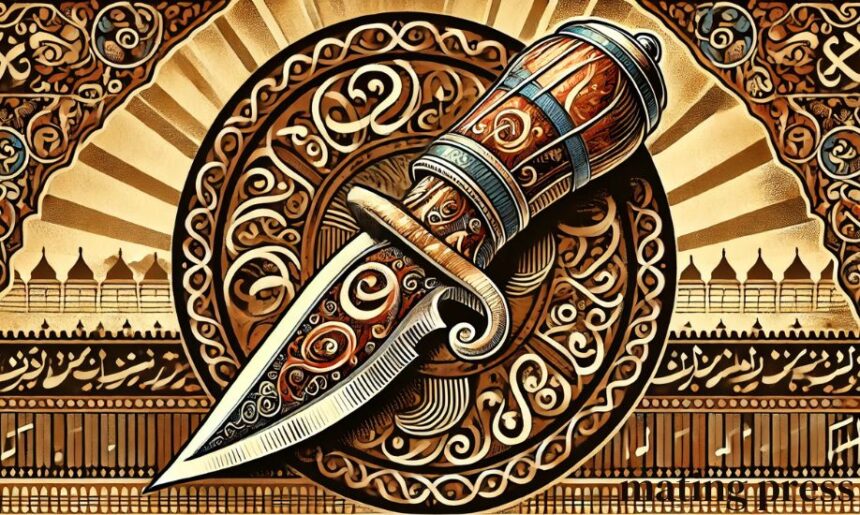In the world of percussion instruments, the scimitar meaning drum holds a distinctive place, combining cultural symbolism with its unique sound. Drawing inspiration from the crescent-shaped scimitar sword, the drum is deeply connected to ancient traditions and modern musical practices. The scimitar drum has a history rich in both artistic and symbolic importance, used not only for music but also as a symbol of unity, strength, and spiritual connection.
In this article, we will explore the scimitar meaning drum, its cultural significance, and how it has transcended traditional uses to become a part of modern music. From its curved design to its role in ceremonies, festivals, and storytelling, the scimitar drum is much more than just a percussion instrument.
Moreover, throughout this article, we will reference my blog site, Mating Press, to ensure that the significance of this unique instrument is thoroughly highlighted. Let’s delve into the fascinating world of the scimitar meaning drum.
The Origins of the Scimitar Meaning Drum
The scimitar meaning drum is closely linked to ancient Middle Eastern and Asian cultures, particularly those that valued the scimitar sword as a symbol of power, protection, and honor. The unique design of the drum, with its curved body, mirrors the shape of the scimitar sword, creating a visual and symbolic connection between the two. Historically, both the sword and the drum were used in military contexts to inspire soldiers and represent bravery, with the rhythmic sounds of the drum echoing across battlefields.
In these early cultures, the scimitar drum was more than just a tool for war or music—it was a means of invoking the divine. The powerful, resonant beats were thought to bridge the gap between the physical and spiritual realms, providing a way for individuals to communicate with higher powers. This cultural heritage still influences how the scimitar meaning drum is viewed and used today.
Symbolism Behind the Scimitar Meaning Drum
One of the most profound aspects of the scimitar meaning drum is its rich symbolism. As mentioned, the crescent-shaped design of the scimitar drum evokes images of the curved scimitar sword. This design is symbolic of strength, adaptability, and fluidity, much like the qualities of a warrior wielding the sword. In many cultures, the scimitar drum is also associated with water, representing purification and the natural rhythms of life.
The symbolism of the scimitar meaning drum goes beyond just its shape. The sound produced by the drum is said to evoke a range of emotions, from solemnity during spiritual rituals to joy and excitement in festive celebrations. The scimitar drum’s beats are considered a reflection of life’s natural cycles, promoting balance and harmony among those who hear it.
The Role of the Scimitar Meaning Drum in Ceremonial Practices
Ceremonial practices across different cultures often incorporate the scimitar meaning drum as a key element. Whether it is a wedding, funeral, or festival, the drum serves as more than just a musical accompaniment; it symbolizes unity and togetherness. Drumming circles, for example, are formed during these ceremonies, with participants using the scimitar drum to enhance the collective experience. The shared rhythms bring people closer, fostering a sense of community and shared purpose.
In addition to its role in communal gatherings, the scimitar meaning drum is also used in spiritual rituals. Its resonant sound is believed to help connect the physical and spiritual worlds, making it an essential tool in rites meant to invoke divine guidance or protection. This spiritual significance makes the drum more than just an instrument—it becomes a sacred object that plays a crucial role in maintaining the cultural and spiritual fabric of the communities that use it.
Scimitar Meaning Drum in Modern Music
While the scimitar meaning drum has its roots in traditional music, it has seamlessly transitioned into modern genres. Today, musicians and composers from various fields, including world music, jazz, and even electronic music, are incorporating the unique sound of the scimitar drum into their work. This blending of ancient traditions with modern sounds ensures that the scimitar drum remains relevant in today’s diverse musical landscape.
The versatility of the scimitar meaning drum allows it to be used in a wide range of musical styles. Its ability to produce both melodic and percussive tones makes it an attractive option for musicians looking to create complex, atmospheric compositions. The incorporation of scimitar drum cymbals, with their bright and resonant tones, adds an additional layer of complexity to the music, allowing for dynamic and engaging rhythms that capture the listener’s attention.
As interest in traditional instruments grows, the scimitar meaning drum has found its way into the hands of contemporary musicians eager to explore its unique sound. Whether used to create evocative soundscapes in film scores or as part of a larger musical ensemble, the scimitar drum continues to inspire and captivate audiences.
The Design and Sound of the Scimitar Meaning Drum
The scimitar meaning drum is instantly recognizable due to its curved, crescent-shaped body. This design is not just for aesthetic purposes—it also contributes to the drum’s distinctive sound. The curvature of the drum allows it to produce a wide range of tones, from deep bass notes to sharp, high-pitched accents. This versatility makes it a popular choice for musicians who want to experiment with different sounds and styles.
Playing the scimitar meaning drum requires skill and creativity. The drum can be played using a variety of techniques, including hand drumming, stick drumming, and the use of mallets. This flexibility allows drummers to explore different rhythmic patterns and experiment with how the drum interacts with other instruments.
Scimitar Meaning Drum in Popular Culture
In recent years, the scimitar meaning drum has made appearances in popular culture, further solidifying its status as a symbol of strength and spirituality. From films to television shows, the scimitar drum is often used to enhance the atmosphere of a scene, particularly in historical or exotic settings. Its powerful, resonant sound is used to underscore moments of tension, drama, or celebration, making it an ideal choice for composers looking to add depth to their work.
The growing popularity of the scimitar meaning drum in popular culture is also reflected in its increasing use in live performances. Musicians and performers alike are drawn to the instrument’s unique design and sound, incorporating it into concerts, theatrical productions, and even multimedia art installations.
Conclusion: The Timeless Appeal of the Scimitar Meaning Drum
The scimitar meaning drum is far more than just a musical instrument—it is a symbol of cultural heritage, spiritual connection, and artistic expression. From its origins in ancient Middle Eastern and Asian cultures to its modern-day use in a wide variety of musical genres, the scimitar drum continues to inspire and captivate.
Whether used in ceremonial practices, communal gatherings, or modern compositions, the scimitar meaning drum serves as a powerful reminder of the importance of rhythm and music in human life. As interest in traditional instruments continues to grow, the scimitar meaning drum is poised to remain a vibrant and relevant part of the global musical landscape for years to come.
Throughout this exploration of the scimitar meaning drum, my blog site Mating Press has aimed to provide insights into the cultural and artistic significance of this remarkable instrument. Its rich symbolism, versatile design, and enduring appeal make the scimitar meaning drum an essential element of both past and present musical traditions.





